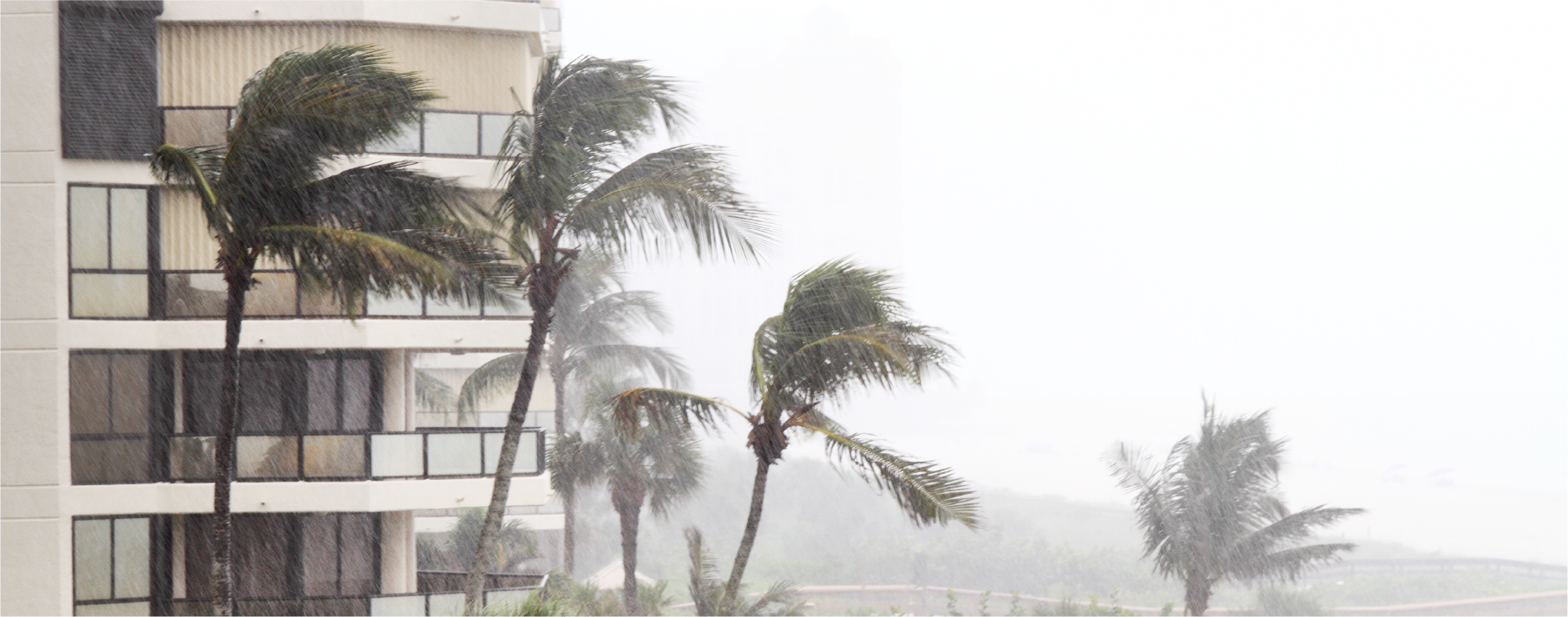Why Windstorm Insurance Matters [Guard Against Gusts]

Strong winds and storms can cause serious and costly damage. While some home insurance for wind damage may be covered by standard homeowners insurance, it is usually insufficient in places prone to frequent strong storms. Windstorm insurance becomes crucial in areas known for hurricanes, tornadoes, or severe winds.
This type of catastrophe insurance offers additional protection against a range of wind-related harm. It addresses powerful gusts, hurricanes, tornadoes, and hailstorms. You have financial help for house repairs with homeowners insurance with wind and hail coverage. It also facilitates the replacement of broken items. Moreover, if your house becomes uninhabitable, it could help with temporary living expenses.
In this guide, we will look into why windstorm insurance is so crucial.
Key takeaways
- Windstorm insurance is essential for homeowners in high-risk areas. It offers specific coverage for wind-related damage, which the standard homeowners insurance might only partially cover.
- It covers a range of wind damage, including that caused by hurricanes, tornadoes, and tropical storms.
- Filing a wind damage insurance claim involves several steps, such as detailed documentation and understanding policy limits and deductibles.
- Protecting your home from windstorms involves both adequate insurance coverage and preventative measures.
What is windstorm insurance?
Windstorm insurance is a specialized form of property and storm insurance designed to protect homeowners from damage caused by powerful winds. Are you wondering, "Is a tornado considered a windstorm?" Yes, a tornado is considered a windstorm by definition in insurance. These winds can also include those from hurricanes or cyclones.
Fast winds from thunderstorms, hurricanes, and other disasters can destroy hundreds of miles of land in a single event, according to the National Severe Storms Laboratory (NSSL). These winds can go from 60 mph to 100 mph. Unlike standard homeowners insurance, windstorm insurance provides comprehensive protection for these events.
This insurance is especially important for those in areas prone to severe windstorms. In these regions, basic policies might only partially cover the risks. In some high-risk areas, mortgage lenders may require homeowners to carry a windstorm insurance policy. This ensures that their property is adequately protected.
How does windstorm insurance work?
When you add wind insurance to your homeowners' policy, it typically comes as an insurance rider. This means it's an additional layer of protection that is not included in your primary coverage. Once this rider is in place, your windstorm insurance will cover damage caused by high winds, such as hurricanes or tornadoes.
Depending on your location, your policy might only activate under certain conditions. For instance, it may only cover damage if winds reach a specific speed or the National Weather Service names the storm. Carefully reviewing your policy is crucial to understanding what is covered and when your coverage applies.
Your windstorm insurance policy will outline the types of wind damage it covers and any exclusions. For example, windstorm insurance may cover damage from a tornado. But it usually doesn't cover flood damage from the same storm. You would need separate flood insurance for that.
After processing your wind claim, you can use the payout to repair or rebuild your home. It can also help replace personal belongings or cover additional expenses.
Does homeowners insurance cover windstorm damage?
Homeowners insurance usually covers windstorm damage. Your standard policy typically helps pay for repairs if wind damages your roof, siding, or windows. It may also cover the cost of fixing or replacing items inside your home damaged by wind.
However, coverage can vary based on where you live. Your standard insurance might not be enough in places prone to severe windstorms, like Florida or Texas. Some policies may even exclude wind damage altogether. That's why, in high-risk areas, you might need a separate windstorm insurance policy for full protection.
It's important to review your policy carefully. Make sure you understand what's covered, the limits, and any special deductibles for windstorms, like hurricanes. These deductibles can be higher in some states, so it's good to know the details before a storm hits.
What does windstorm insurance cover?
Windstorm insurance provides coverage for damage caused by high winds, including hurricanes, tornadoes, hailstorms, and other strong wind events. If you're wondering, "Does windstorm insurance cover hurricanes?" the answer is yes. Windstorm insurance typically covers damage from hurricanes, as they are classified as wind-related events. This means that any damage to your home caused by hurricane-force winds would be covered under your policy.
Let's see exactly what windstorm insurance covers:
- Structural damage: This covers damage to your home’s structure, including the roof, walls, and windows.
- Detached structures: It also protects other buildings on your property, including garages or sheds that are damaged by wind.
- Personal belongings: If the wind damages your furniture, electronics, and other personal items, they are covered.
- Debris removal: It helps pay for the removal of fallen trees. It also covers other debris from your property.
- Additional living expenses: If your home becomes uninhabitable due to wind damage, it covers temporary housing costs.
What does windstorm insurance not cover?
While knowing “What does windstorm insurance cover?” is important, it's also important to understand what it doesn't cover. If you're asking, "Does windstorm insurance cover a storm surge?" the answer is no. Storm surge—rising sea level during a storm, often causing flooding—is not covered by windstorm insurance. For protection against storm surges, homeowners need to purchase separate flood insurance.
While windstorm insurance is essential, it only covers some things. Understanding these exclusions is crucial. It ensures you have the right additional policies to fully protect your home and belongings from all potential risks.
Here's what it typically excludes:
- Flood damage: Windstorm insurance doesn't cover damage from flooding. This applies even if the flood is caused by a hurricane or other windstorm. If you live in a flood-prone area, you'll need separate flood insurance to protect against this risk.
- Storm surge: Damage caused by a storm surge, which is the rise in sea level during a storm, is also not covered. You would need flood insurance for this as well.
- Mold: If mold develops from a cause unrelated to a covered wind event, your windstorm insurance won't cover it. Mold damage typically requires separate coverage or may not be covered at all.
- Water backup: Damage from water backing up through drains or sewers isn't covered by windstorm insurance. You would need a separate policy or rider for water backup coverage.
- Wear and tear: Damage caused by lack of maintenance or normal wear and tear is not covered. Windstorm insurance is designed for sudden and unexpected events, not gradual damage over time.
- Subsequent damage: If a windstorm causes direct damage, windstorm and hail insurance will cover the roof repair. This damage could include ripping off part of your roof. However, if rain gets in afterward and causes further damage, that additional damage isn't covered.
- Vehicle damage: If a windstorm causes a tree or fence to fall on your car, windstorm insurance won't cover the car damage. For that, you would need auto insurance.
How do I know if I need windstorm insurance?
Are you asking yourself, "Do I need windstorm insurance?" The answer depends on your individual circumstances. If you live in an area prone to high winds, hurricanes, or tornadoes, you likely need windstorm insurance. Coastal regions and states like Texas and Florida are particularly vulnerable, so lenders often require homeowners to carry this type of insurance.
To assess whether you need windstorm insurance, consider the following:
- Geographic location: Are you in a high-risk area for windstorms?
- Home value: How much would it cost to repair or rebuild your home if a windstorm damaged it?
- Current coverage: Does your standard homeowners' policy offer enough protection for windstorm insurance coverage? Or are there significant gaps?
Say you have no idea whether this insurance rider is mandatory in your jurisdiction. Before you call your insurance carrier, make sure you've checked for the details, including requirements for different states below (some states may also offer this as an insurance rider):
- Texas
- Florida
- New York
- Pennsylvania
- Georgia
- North Carolina
- Virginia
- Massachusetts
- Maryland
- Louisiana
- South Carolina
- Alabama
- Mississippi
- Connecticut
- Hawaii
- Maine
- Rhode Island
- New Jersey
- Delaware
- District of Columbia
How much is windstorm insurance?
Windstorm insurance can vary by state. For instance, as of 2024, windstorm insurance can run around $2,300 a year in Texas coastal and high-risk areas. However, the cost of windstorm insurance varies widely based on several factors:
- Location: Homes in high-risk areas will have higher premiums.
- Home value: The more expensive your home, the more coverage you'll need, increasing the cost.
- Deductible: A higher deductible usually means lower premiums but more out-of-pocket costs if you file a claim.
- Construction: Homes built to withstand high winds may qualify for discounts.
The exact cost depends on the risk level and coverage needs.
How do I file a windstorm claim?
To file a windstorm insurance claim, follow these steps:
- Act quickly: File your claim as soon as possible. Many policies have deadlines for reporting storm damage.
- Document the damage: Immediately after the storm, take photos and videos of any damage. Record the storm date and keep news articles as proof.
- Contact your insurer: Notify your insurance company and provide all the information gathered. Request a visit from a claims adjuster.
- Get estimates: Have at least two reputable contractors inspect the damage and provide written repair estimates.
- Review and appeal: If your claim is denied, request another evaluation. If necessary, you can meet with up to three different insurance adjusters.
What will my windstorm deductible be?
Your windstorm deductible—the amount you would pay out of pocket upon claim submission—is percentage-based and depends on the coverage level you chose (typically, up to five percent). While not all businesses demand a deductible for this kind of damage, if you live near a coast or in a region where tornadoes are frequent, you will probably be asked to choose a deductible percentage.
Before choosing your wind insurance coverage, you should consider your finances to see how much you can afford to pay out of your pocket if your home suffers damage. If you have little disposable income or savings to help control out-of-pocket costs, you might consider a smaller deductible (but your premiums will be higher).
On the other hand, you can increase your deductible percentage to get reduced premiums if you have an emergency fund set aside and would like to pay fewer premiums. In either case, you can always see how much you're deductible on your declaration page.
Tips for protecting your home from windstorm damage
While windstorm insurance and homeowners insurance are vital, taking steps to protect your home from wind damage is equally important. Consider the following tips:
- Reinforce windows and doors: Install storm shutters or impact-resistant windows.
- Secure loose items: Anchor outdoor furniture, sheds, and other items that could become projectiles in high winds.
- Maintain your roof: Regularly inspect and maintain your roof to ensure it can withstand severe weather.
- Trim trees: Keep trees around your home trimmed to prevent branches from falling during a storm.
Still have questions?
Still have questions about windstorm insurance? Let’s look at some of the questions that people frequently ask.
What are the damages caused by windstorms?
Windstorms can cause extensive damage, including roof damage, broken windows, and structural damage to homes. Flying debris can also lead to serious property damage.
How long do windstorms last?
The duration of a windstorm can vary from a few minutes to several hours, depending on the type and severity of the storm.
How much wind can a roof withstand?
A well-maintained roof can typically withstand winds of up to 90 mph, but this can vary based on the roof's construction and materials.
Is Texas windstorm insurance mandatory?
In Texas, windstorm insurance is mandatory for homes located in certain high-risk coastal areas.
Does windstorm insurance cover tornado damage in Florida?
Yes, windstorm insurance typically covers tornado damage in Florida, but it's important to check your specific policy for details.
Is wind damage covered by insurance?
Yes, wind damage is typically covered by homeowners insurance. However, you may need separate windstorm insurance in high-risk areas.
Is wind and hail insurance required by law?
Although the law doesn't impose wind and hail insurance, mortgage lenders may demand it in high-risk locations. Coverage is essential for protection against damage in areas prone to strong storms.



